Princeton Theology Collection (55 vols.)
Digital Logos Edition
Overview
Since its founding in 1812, over 20,000 students have graduated from Princeton Theological Seminary. Its early founders and professors were staunch proponents of Calvinist doctrines, and their Reformed theology has had an enduring impact on Christianity for the last two centuries. The Princeton Theology Collection (55 vols.) brings together the works of four Princeton principals, together known as the Great Princeton Theologians:
- Archibald Alexander Collection (20 vols.)
- Charles Hodge Commentary Collection (4 vols.)
- A. A. Hodge Collection (11 vols.)
- B. B. Warfield Collection (20 vols.)
The Archibald Alexander Collection contains twenty volumes of works on biblical studies and theology. This collection includes Alexander’s important writings on biblical authority—the first works in Princeton theology to defend biblical inspiration against the claims of higher critics—a project greatly expanded by his successors Charles Hodge and B.B. Warfield. The Archibald Alexander Collection also includes Alexander’s works on religious experience, church education, and his two massive volumes on the history of Israel. This collection also contains numerous sermons, lectures, and other addresses, including his address delivered at his own inauguration as professor of theology at Princeton.
The four commentaries in the Charles Hodge Commentary Collection serve as the basis for Hodge’s life and thought, making his commentaries important for both biblical scholars and theologians. The volumes contain verse-by-verse commentary on every chapter in Romans, 1 Corinthians, 2 Corinthians, and Ephesians, along with textual analysis, doctrinal points, and helpful chapter summaries. Each commentary also includes a lengthy introduction and overview written by Hodge himself, in which he examines the authorship and dating of each book, along with the historical, cultural, political, and theological context of the original audience.
The 11-volume A. A. Hodge Collection includes six volumes authored by Hodge, plus two volumes co-authored by Hodge on the Westminster Confession, the famous biographical sketch of Hodge’s life, A Discourse in Memory of A. A. Hodge by Francis L. Patton, and Princetoniana, by a student. His theology stemmed from his experience as a pastor, his work in India as a missionary, and his teaching career spent with the students and faculty of Princeton. Hodge’s theological exploration was intended for the members of his church and for the direct benefit of his students.
The B. B. Warfield Collection includes the entire 10-volume Works of Benjamin B. Warfield, published in the decade following his death in 1921, plus 10 additional volumes which contain books, articles, and lectures not found in the original 10 volumes. As a prolific writer and accomplished scholar, Warfield defended Reformed confessionalism against the extremes of nineteenth century modernist and revivalist theology, and defined the parameters of theological method for the twentieth century.

- Archibald Alexander’s works on religious experience, biblical inspiration and authority, and other important themes in Princeton theology
- Comprehensive introduction and overview for each Charles Hodge commentary
- Summary of significant doctrinal points follows each chapter in the Charles Hodge commentaries
- The original 10-volume Works of Benjamin B. Warfield
- An additional 10 volumes of books, articles, and lectures not included in the original 10-volume Works of Benjamin B. Warfield
Hodge's method and matter make him doubly useful in commenting. He is singularly clear, and a great promoter of thought.
[Hodge] gave theological structure to the claims of reality that reminded their hearers of the limitations of human achievement and the fragility of true virtue.
—John Farina
[B. B. Warfield's] mind was so clear and his literary style so chaste and lucid that it is a real joy to read his works and one derives pleasure and profit at the same time.
Beyond all question [A. A. Hodge] takes his place among the great men of America and the great theologians of the world.
—Francis Landey Patton, in A Discourse in Memory of Archibald Alexander Hodge, 1887
- Title: Princeton Theology Collection
- Volumes: 55
- Pages: 17,012
This title is included in the following collections
You can save when you purchase this product as part of a collection.
Logos 7 Reformed Diamond Legac...
$2,999.99$2,999.99Logos 5 Reformed Diamond Legac...
$2,999.99$2,999.99Logos 7 Reformed Portfolio Leg...
$4,749.99$4,749.99Classic Scholarship Collection...
$12,102.39$7,299.99
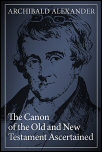
The beginnings of the nineteenth century witnessed mounting objections to the authenticity and divine inspiration of Scripture, prompting individuals both inside and outside the church to question the origin and purpose of the Bible. Where in the Bible is God’s revelation found? What is the difference between Scripture and tradition? Does God’s word take precedence over oral traditions?
In this volume, Archibald Alexander identifies the canon by using the testimony of the early church, along with the internal evidence within the books themselves. He also deals with methodology, including the process whereby a book is canonized. This volume also contains an explicit rebuttal of the work of J. D. Michaelis, one of the early biblical scholars to question the authenticity of the Gospels of Mark and Luke.
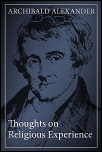
There are two kinds of religious knowledge, says Archibald Alexander: truth revealed in Scripture, and the impression truth makes on individuals—the experience of truth. In Thoughts on Religious Experience, Alexander explains that the truth of God constitutes more than mere religious sentiment, and cautions against overestimating the capabilities of the human mind to identify and determine truth. He also writes at length on aspects of piety, religious conversion, backsliding, and the effects of sanctification in our efforts to identify religious truth.
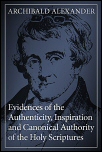
The revelation of God is neither improbably nor unreasonable—in Scripture, or anywhere else. Evidences of the Authenticity, Inspiration, and Canonical Authority of Holy Scripture contains Archibald Alexander’s apologetic for God’s revelation in Scripture. He devotes a significant portion of this volume to determining the truth of Scripture, to the veracity of miracles and fulfilled prophecy, and the credibility of the Gospels.
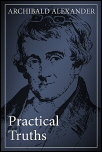
Practical Truths contains forty articles written by Archibald Alexander for the American Messenger, in addition to seven evangelical tracts, six small books, and a vast collection of Alexander’s short works. This volume contains articles, essays, lectures, and sermons on a variety of topics, including heaven, judgment, and missions, as well as numerous stories and other anecdotes.
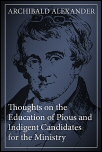
As Professor of Theology at Princeton Theological Seminary, Archibald Alexander concerned himself with the training and formation of candidates for ministry. This volume explores the continued necessity of educating ministers in an era of diminished respect for author, where individuals resist dependence on others. Alexander also ponders the church’s duty to support, encourage, and train youth to discern their callings.
In addition to the practical advice contained in this volume, Thoughts on the Education of Pious and Indigent Candidates for the Ministry also offers a revealing glimpse of the early years of Princeton Theological Seminary, including the relationship of seminaries to churches, as well as the state of Presbyterianism in early nineteenth century America.
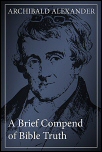
A Brief Compend of Bible Truth contains thirty eight brief chapters on a wide range of theological themes, including the being and nature of God, the content of Scripture, the creation and the fall, the atonement, and much more. This brief system of theology is designed for those unable to study larger and more comprehensive works. It avoids technical language, yet still contains solid arguments, sound reasoning, and the foundation of Scripture.
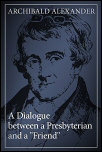
This brief volume contains a hypothetical conversation between two people—one a regular church attendee, and the other attending for the first time. This conversation addresses obstacles which prevent church membership, and reveals the conception of the nineteenth century church from the outside. It also addresses common questions posed by skeptics—everything from church membership to the payment of ministers.
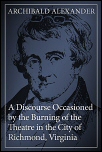
On December 26, 1811, a fire swept through the theater in Richmond, Virginia, burning it to the ground and killing dozens of people inside. This sermon was delivered two weeks later at the Third Presbyterian Church in Philadelphia on January 8, 1812 at the request of students from Virginia who attended the University of Pennsylvania. This sermon not only serves as a tribute to those whose lives were lost, but also recounts the biblical themes of grief and lament.
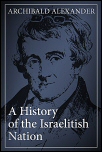
Near the end of his life, Archibald Alexander began working on a detailed history of the nation of Israel. Although the completion of the final proof was interrupted by his death, an unedited draft of the manuscript was published, and widely received.
“The history of the Bible,” says Alexander, “exhibits human nature in its true colors.” This massive work offers important historical and cultural context for reading the Bible.
A History of the Israelitish Nation argues for the importance of historical analysis. Alexander explains how history helps us understand the origin and nature of who we are, making the historical study of Israel an especially important enterprise. Israel’s history is intertwined with the revelation of God—the covenant, promises fulfilled, prophecy foretold, the first religious institutions, the laws of Moses, and the promised Messiah. “The history of the Bible,” says Alexander, “exhibits human nature in its true colors.” This massive work offers important historical and cultural context for reading the Bible.
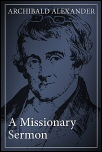
This sermon, first preached in the First Presbyterian Church in Philadelphia on May 23, 1814, explains why Jesus’ command to “go and preach to every nation” represents a new and important era in the history of the church and the world. A Missionary Sermon reminds the church of its obligation to preach, and explores the extent to which the nineteenth century church in America has followed that command.
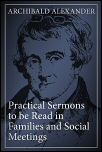
Practical Sermons to be Read in Families and Social Meetings was prepared at the request of the Presbyterian Board of Publication for the benefit of those who could not attend church or regularly hear the preaching of the word. Alexander chose to include sermons suitable for families in need of evangelical truth, which could be read in “fifteen or twenty minutes.” Nearly all of these sermons are focused on Christ, with special emphasis on both redemption and Christ’s love.
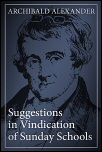
"To know and think accurately, the best method is to teach it." Archibald Alexander’s prescription applies to all learning, but especially theological education. This volume serves not only as an apology for education, but argues for the importance of religious education. It encourages respect for the opinions of others, and is central to the church’s task of educating young people. Suggestions in Vindication of Sunday Schools was first written for the American Sunday School Union—the dominant Sunday school organization at the time—but applies to any context where the church has an interest in the education and formation of young people.
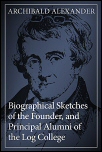
A hundred years prior to the professorship of Archibald Alexander, the Tennent family founded an educational institution in Warminster, Pennsylvania which became known as Log College. This college played a critical role in the establishment of Presbyterianism colleges, and this volume celebrates its hundredth birthday. Authored by Archibald Alexander, this volume sketches the lives of the founders and first alumni of the college. Its revealing glimpse into the early years of Presbyterianism in America during the seventeenth and eighteenth centuries also make this volume an important historical work in its own right.
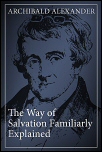
The Way of Salvation Familiarly Explained contains a hypothetical conversation between a father and his four children, explaining the basic principles of Christianity in ordinary language. Although it is intended for children, it serves as a comprehensive theological primer appropriate for any age. In this conversation, Alexander explains weighty doctrines in plain language and understandable terms, including the sin, salvation, and redemption.
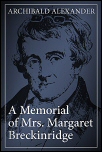
Margaret Breckinridge was a member of the prominent Breckinridge family. She was born in 1802 in New York, and moved first to Princeton and then to Kentucky, where worsening illness forced her to return to Princeton where her life was cut short by death. A Memorial of Mrs. Margaret Breckinridge, written and assembled by Archibald Alexander, was published on the first anniversary after her death. It is divided into two parts, the first containing a memoir and funeral sermon, and the second containing letters to her surviving children.
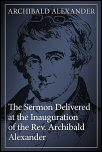
This volume contains material from Archibald Alexander’s inauguration as Professor of Theology at Princeton Theological Seminary. The first part contains a sermon delivered by Samuel Miller, who at the time was pastor of the Church on Wall Street in New York, and would later become a prominent professor of theology at Princeton. His sermon is written to encourage Alexander in his new vocation, and draws extensively from Paul’s letters to Timothy. The second part of this volume contains Archibald Alexander’s discourse on theological education. He locates theological study—at Princeton in particular—within the entire sweep of church history, determining its contents and reiterating the importance of its subjects in a curriculum for ministry training.
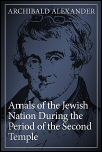
In Annals of the Jewish Nation during the Period of the Second Temple, Archibald Alexander offers a sweeping history of the Israelites. He draws not only from biblical sources, but also from the vast secondary literature on Middle Eastern history. Prominent figures in this volume include Cyrus, Alexander the Great, Ptolemy, Herod, Josephus, and Nero. In this meticulously researched volume, Alexander also chronicles the dissolution of Babylon, the development of the Septuagint, the rise of the Roman Empire, and the destruction of Jerusalem.
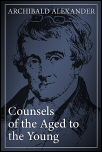
Counsels of the Ages to the Young represents Archibald Alexander’s attempt to bridge the gap between generations. The elderly, he says, are reticent to give advice, and the young people resist taking it. This tract of practical advice draws from Archibald Alexander’s own experience, and aims to bring various generations in the church together. Alexander writes about developing good habits, resisting temptation, and practicing good piety.
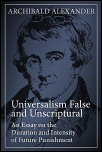
The importance of the question “What happens after we die?” exceeds that of nearly every question ever asked about human existence. Some claim that only a few are saved; others promote universal salvation—and each side harnesses Scripture for their own cause.
In Universalism False and Unscriptural, Archibald Alexander aims to put to rest the misconceptions of universal salvation. He not only argues that universalism directly conflicts with Scripture, but that it also cannot stand on its own merit. In fact, those who promote universalism underestimate the extent of human corruption to their own peril. This helpful volume clarifies what Scripture says about universalism against Alexander’s own critics, and serves as an important guide for today.
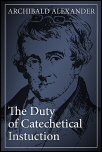
The Duty of Catechetical Instruction serves as a guide for instructing and training young people within the church. In it, Archibald Alexander defends the importance of teaching right doctrine, and helps teachers learn how to make the truths of Christianity sensible. His advice on catechism is firmly rooted in the Scriptural mandate that each generation transmit the faith “to your children’s children.”
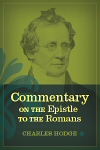
Charles Hodge introduces the book of Romans by discussing the authorship, dating, and setting of the epistle. He also devotes attention to the nature of the original audience, with particular emphasis on the historical and theological context of the church in Rome and the role of Jews in the Roman Empire—fundamental issues which comprise the backdrop of Pauline theology.
The entire volume contains verse-by-verse commentary on each chapter of Romans. Hodge examines both the Greek text and his own English translation, which means that this commentary—like all the commentaries in this collection—are as useful to New Testament scholars as they are accessible to laypersons. He concludes his commentary on each chapter with a summary of the key doctrinal points and their relevance for exegesis and interpretation.
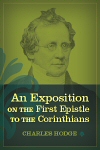
Hodge begins his commentary on 1 Corinthians with an introduction to the geographic and political significance of the city of Corinth. In particular, he shows how the history of Corinth, its relationship to the city to Athens, and the political climate of the Roman Empire contribute to the pastoral and theological controversies which Paul aims to address.
Hodge also attends to the theological implications of Paul’s pastoral concerns for the church in Corinth—issues such as church divisions, sexual immorality, marriage and divorce, idolatry, worship, spiritual gifts, and the resurrection. More importantly, Hodge argues that 1 Corinthians has made its way into the New Testament canon because Paul’s words on these theological and pastoral issues are fit not only for his original readers, but also for the entire history of the church. This commentary on 1 Corinthians serves as an important first step toward hearing those words.
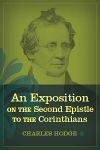
Hodge continues his commentary on Paul’s correspondence with the church in Corinth. In this volume, he addresses Paul’s journeys, the new covenant, the resurrection, reconciliation, idolatry, repentance, generosity, and suffering.
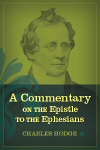
Hodge’s commentary on Ephesians begins with a discussion of the geographic and political significance of the city of Ephesus, and the unique position in which the church there found itself. In particular, says Hodge, the church struggled with how best to resist idolatry and how to relate to their broader culture—not unlike issues faced by the contemporary church.
Hodge also outlines Paul’s history with the church in Ephesus and the timeline of his work, including individuals with whom he met, disputes he resolved, and the other apostles who influenced the church in Ephesus. Hodge also notes the significance of Paul’s infamous confrontation with the supporters of Artemis, along with the relationship between the ensuing riot and the content of the Epistle.
In addition to verse-by-verse commentary and linguistic and textual analysis of every chapter in Ephesians, Hodge also comments more broadly on trends in Ephesians scholarship. He examines German critics and higher criticism in general, and he evaluates nineteenth century commentaries on Ephesians.
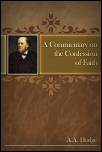
In A Commentary on the Confession of Faith, Hodge analyzes each chapter and section of entire Westminster Confession, offering proofs of its necessity and illustrations of its application. This volume is intended both to facilitate and stimulate study of the Westminster Confession—designed for Presbyterians, but accessible and useful for everyone.
Hodge begins with a short history of the creeds and confessions in general and a history of the Westminster Confession in particular, including the historical and theological events which inspired its composition. Most of the volume is rightly devoted to detailed commentary on the Confession itself. Each chapter includes a detailed exposition of the Confession, and concludes with dozens of questions for review and reflection. A Commentary on the Confession of Faith also includes appendices which contain statements by Charles Hodge and Henry B. Smith, as well as the 1879 Auburn Declaration and the Declarative Act of the United Presbyterian Synod of Scotland.
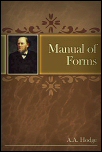
Manual of Forms for Baptism, Admission to the Communion, Administration of the Lord’s Supper, Marriage, and Funerals, Ordination of Elders and Deacons, Etc.
- Author: Archibald Alexander Hodge
- Publisher: Presbyterian Board of Publication and Sabbath-School Work
- Publication Date: 1920
- Pages: 124
Hodge’s Manual of Forms contains outlines and suggestions for worship services and special occasions. First published in 1882 and expanded into the current edition, these forms are drawn from numerous sources—including Hodge’s own pastoral experience—and are designed as an aid for pastors, preachers, and others involved in public worship. This volume contains outlines of worship services for special occasions, forms for baptism, marriage, ordination, and funerals, as well as selections of scriptures and prayers for pastoral visitation to the sick. This handbook also contains the Ten Commandments, the Lord’s Prayer, and the Creeds. Portions of other worship books borrowed from A. A. Hodge’s historically significant Manual of Forms, testifying to its continued relevance and usefulness.
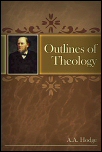
A. A. Hodge composed Outlines of Theology for his congregation—making the tone of this succinct systematic theology more pastoral than dogmatic. Hodge credits his father’s theological wisdom, and acknowledges that conversations with his father, as well as material from his father’s sermons and lectures, has made its way into Outlines of Theology. This outline began as a series of popular lectures and sermons, which Hodge’s congregation urged him to publish for a broader audience.
Outlines of Theology attempts to orient theological discussion around a shared language. Hodge surveys the whole of theology concisely and succinctly. He covers the central doctrines, the most important moments in church history, as well as the purpose of divine revelation. Hodge also discusses ecclesiastical issues, such as baptism and the Lord’s Supper. Outlines of Theology is intended as a theological manual for preachers, a theological syllabus for students, and a clear and accessible summary of theology for those who lack the means or the time to read a more expansive systematic theology.
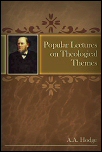
This volume began as a series of lectures delivered in a women’s class at Princeton in the mid-1880s. After Hodge received repeated requests to deliver these lectures for a broader audience—and glowing reviews of their content in the Presbyterian and the Presbyterian Journal—he compiled them into this accessible monograph for wider distribution.
Popular Lectures on Theological Themes explains theology in accessible language for a wide—and not necessarily theologically-trained—audience. He aims to make theological topics sensible and straightforward: he writes at the outset, “All theology must be theocentric—must have God for its beginning and end.” Popular Lectures on Theological Themes also includes chapters on hotly-debated theological topics such as predestination, the sacraments, miracles, and the efficacy of prayer.
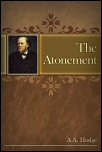
The Atonement began as a series of articles on the atonement which appeared in the Presbyterian Banner intended to correct the broad misrepresentation of the doctrine of the atonement. This compilation of Hodge’s articles served as a useful resource for Reformed churches—then and now—and creates a deepened understanding of the atonement from the perspective of Calvinism.
Hodge begins with a broad introduction to the doctrine of the atonement in non-technical language, outlining its development and controversies. He explains the various theories of the atonement, as well as the theological problems basic to each. In addition to a detailed outline of the doctrine of the atonement, Hodge also asks fundamental questions about its meaning, comparing contemporary accounts of the atonement to historic Reformed traditions.
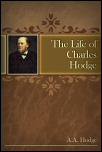
Charles Hodge counts as one of the most influential theologians of the nineteenth century and one of Calvinism’s most ardent defenders in America. He was born in 1797 in Philadelphia to Hugh and Mary Hodge. He graduated from the College of New Jersey (Princeton University) in 1815, and was ordained in the Presbyterian Church in 1821. In 1822, at the request of Archibald Alexander, he became a professor at Princeton, and taught biblical literature and systematic theology until 1878. From 1826 to 1828, Hodge also studied in Europe, and became acquainted with Friedrich Augustus Tholuck, Wilhelm Gesenius, Augustus Neander, and Friedrich Schleiermacher.
During his tenure at Princeton, Charles Hodge instructed more than three thousand ministers, served as moderator of the Presbyterian General Assembly in 1846, helped revise the Presbyterian Church’s Book of Discipline, and served on the Board of Foreign Missions. He also founded the Biblical Repertory and Princeton Review and served as its editor for forty-three years. In addition to his systematic theology and four Bible commentaries, Hodge also wrote books on the Presbyterian Church and published numerous articles.
After Charles Hodge’s death in 1878, his son, Archibald Alexander Hodge penned this biography of his father. Drawing from Charles Hodge’s published writings, extant manuscripts, correspondence, and personal memories, A. A. Hodge offers this revealing look at his father’s studies, his relationships with his family members, his travels, and the lifelong friendships which informed and influenced his teaching and theological reflection. The Life of Charles Hodge reveals the story behind one of the nineteenth century’s most thoughtful Christians and the church’s most profound theologians.
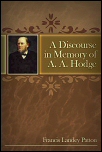
A Discourse in Memory of A. A. Hodge was delivered by Francis L. Patton in the Chambers Presbyterian Church on December 21, 1886 at the invitation of the Philadelphia Presbyterian Ministerial Association. Today, it is remembered as one of the most notable—and widely cited—recollections of the life and work of A. A. Hodge.
Patton was well-acquainted with Hodge, having served as his colleague at Princeton, and he reflects both personally and theologically on Hodge’s contributions to Reformed theology. He begins with a lengthy description of A. A. Hodge’s relationship with his father, Charles Hodge, and the intellectual climate at Princeton in which he was born and raised. Patton also recounts Hodge’s work in India, eventual return to America, and his long career as a pastor and theologian. A Discourse in Memory of A. A. Hodge serves as a fitting tribute to Princeton’s third professor of systematic theology—“not simply a theological professor, but a spiritual force.”
Francis Landey Patton was born in 1843 and lived until 1932. Patton was the twelfth president of Princeton University as well as an American educationalist and theologian.
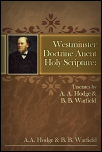
The Westminster Doctrine anent Holy Scripture: Tractates by A. A. Hodge and B. B. Warfield was published at the close of the nineteenth century by the Free Church of Scotland to address the controversy brewing over scriptural inspiration. Liberalism had nearly succeeded in stripping the divine inspiration and authority from Scripture, and fundamentalists responded with a doctrine of inerrancy. This series of tracts by A. A. Hodge and B. B. Warfield contain a succinct summary of biblical inspiration and respond to its objections. Both Hodge and Warfield defend the authenticity and integrity of the books of the Old and New Testament, and examine both textual and historical evidence. This volume also contains a lengthy appendix on the doctrine of biblical inspiration in the Free Church of Scotland.
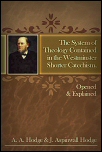
In this concise volume, both A. A. Hodge and J. Aspinwall Hodge not only outline a clear understanding of God’s plan of salvation, but emphasize the ability to communicate God’s plan to others. This handbook on the Westminster Shorter Catechism serves as a clear and concise exposition of the doctrine—based on the Bible—contained in the Westminster Shorter Catechism. Hodge’s completion of The System of Theology Contained in the Westminster Shorter Catechism Opened and Explained was interrupted by his death in 1887, and his cousin, J. Aspinwall Hodge, finished the work.
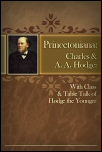
Princetoniana was crafted by an anonymous student, familiar with the life and work of both Charles Hodge and A. A. Hodge. The first part of this volume is biographical, drawing from numerous sources and witness to capture the relationship between A. A. Hodge and his father, as well as Charles Hodge’s influence on him. This biographical sketch provides a rare glimpse of their lives together, telling the story of A. A. Hodge’s rise to prominence at Princeton after his father’s death and his place among the Princeton theologians. The second half of Princetoniana contains aphorisms, short sayings, classroom notes, and short theological treatises written by A. A. Hodge.
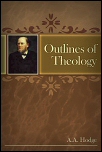
Outlines of Theology
- Author: A. A. Hodge
- Publisher: Robert Carter and Brothers
- Publication Date: 1879
- Pages: 678
In 1878, a new edition of Hodge’s Outlines of Theology was finished. This expanded edition contains nearly fifty per cent more content than the first edition published in 1863. Five new chapters were added, and two were dropped. Several other chapters were rewritten or reorganized, and others were substantially enlarged. This edition also contains excerpts from relevant confessions, creeds, and classic theological works. It also benefits from fourteen years of scholarship during the intervening years.
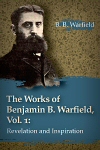
If the Bible is written by fallible human beings, how can its words convey divine revelation?
Perhaps the greatest challenge of Warfield’s lifetime was the modernist skepticism of biblical inspiration and authority. Modern biblical scholars showed that textual and linguistic analysis proved the human authorship of the Bible, and from there proceeded to strip miracles of their power, texts of their authenticity, and God of his historical intervention in the lives of individuals. Warfield responded to modernist and higher biblical critics by showing that intellect of the biblical authors not only remained fully operational and engaged, but that God also worked through human words and texts to convey divine revelation.
B. B. Warfield’s volume on divine revelation and biblical inspiration defined the parameters of the twentieth century understanding of biblical infallibility, inerrancy, and the trustworthiness and authority of Scripture. He pioneered a view of biblical inspiration and authority which remains widely held today by many Reformed and evangelical Christians. Revelation and Inspiration contains ten of Warfield’s most influential articles on the subject, as well as two appendices—one on the divine origin of the Bible and the other on the canonicity of the New Testament.
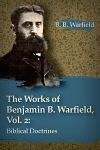
B. B. Warfield’s articulation of doctrine blurs the boundary between theology and biblical interpretation. He wrote so prolifically on both theology and the Bible that delineating where one ends and the other begins can be a challenging task. Biblical Doctrines contains sixteen articles on key doctrines of Christianity, including predestination, the Holy Spirit, the doctrine of the Trinity, and the incarnation. Warfield shows how all of these central doctrines are firmly rooted in Scripture. This volume also concludes with a complete appendix of Warfield’s articles on biblical doctrines.
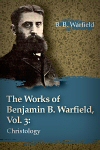
"Who do you say that I am?" asked Jesus of his disciples. The question, says Warfield, is also worth asking of modernist skeptics, who assail the deity of Christ, strip the Gospel from the person of Jesus, domesticate the work of God, and unwittingly create a Christless Christianity. Warfield has little tolerance for modernist, deist, and pragmatist conceptions of Christ, and aims to reaffirm the position of the second person of the Trinity.
Warfield begins with a comprehensive survey of Jesus in the Old Testament—present at creation, in the promises to the patriarchs, and in the words of the prophets. He also notes Jesus’ own words about himself in the New Testament, along with the early church’s conception of his humanity and deity. Warfield also tackles historical heresies about Jesus and warns of their tendency to periodically reappear in orthodox Christianity. Christology and Criticism fittingly articulates a biblical and historical theology of the second person of the Trinity.
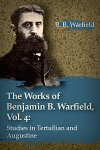
Tertullian lived during the second and third century, and he helped the church refine its theology and defended it against pagan attack. He also helped articulate many of its central doctrines—in his writings we find the first usage of the word “Trinity” and the first mention of the Trinitarian formula—“three persons, one substance.” B. B. Warfield offers a biographical sketch of Tertullian’s life, along with an account of his historical and theological influence.
The second part of Studies in Tertullian and Augustine is devoted to the life of Augustine. Warfield outlines the significant moments in Augustine’s life and summarizes his impact on theology in the Western Church. He includes chapters on Augustine’s doctrine of knowledge and authority, on Augustine’s Confessions, and concludes with a lengthy article on Augustine and the Pelagian Controversy.
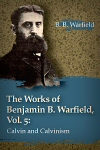
Warfield devoted a significant portion of his scholarly pursuits to the life and thought of John Calvin. Throughout his lifetime, Warfield remained an ardent defender of the Reformed faith, in part because Reformed theology represented an orthodox medium between the extremes of emotional revivalism on the one hand and domesticated liberal theology on the other. He believed that confessional Reformed theology could withstand contemporary criticism from both extremes, because Reformed confessions offered the clearest and most honest summary and application of Scripture.
Warfield’s volume on Calvin and Calvinism begins with a lengthy biography of John Calvin, followed by chapters on Calvin’s doctrine of the knowledge of God, Calvin’s doctrine of God, and the doctrine of the Trinity. The volume concludes with two final chapters on Calvinism in general, and on the literary history of Calvin’s Institutes.
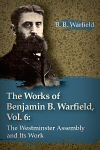
The Works of Benjamin B. Warfield, Vol. 6: The Westminster Assembly and Its Work
- Author: Benjamin B. Warfield
- Publisher: Oxford University Press
- Publication Date: 1931
- Pages: 400
As one of the leading theologians of late-nineteenth century Presbyterianism, Warfield wrote extensively on the Westminster Confession and the Westminster Assembly. He begins this volume with an outline of the work of the Westminster Assembly, which, in his view, plants the historical and theological seeds of Presbyterianism in America. Warfield also includes a lengthy commentary on the first question and answer of the Westminster Shorter Catechism—What is the chief end of man? The answer to the question, and the subject of Warfield’s volume—indeed, the whole of his theological pursuits—is to glorify God and enjoy him forever.
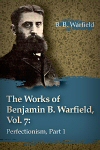
The Works of Benjamin B. Warfield, Vol. 7: Perfectionism, Part 1
- Author: Benjamin B. Warfield
- Publisher: Oxford University Press
- Publication Date: 1931
- Pages: 399
All of Warfield’s writings are littered with a subtle disdain for Christian perfectionism—from his condemnation of Pelagianism in the early church to his critique of the marriage of works and grace in theology in America. However, this volume succinctly and coherently outlines Warfield’s appraisal of Christian perfectionism.
Warfield resists the perfectionist tendencies in Christian thought and practice. He warns against mistakenly thinking the endowments of human nature and the condition of human action can somehow affect the efficacy of grace and the extent of the Spirit’s work in sanctification. Warfield admits that Christian perfectionism comes not from a single source, but stems from an admixture of Pelagianism, rationalism, and libertarianism. This volume explains the complicated and meandering history of Christian perfectionism, and includes chapters on Ritschl, Wernle, Clemen, Pfleiderer, Windisch, and the Higher Life Movement.
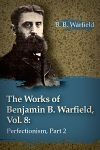
The Works of Benjamin B. Warfield, Vol. 8: Perfectionism, Part 2
- Author: Benjamin B. Warfield
- Publisher: Oxford University Press
- Publication Date: 1932
- Pages: 611
Warfield’s second volume on Christian perfectionism is divided into three parts. The first part outlines Oberlin perfectionism and the theology of Charles Finney. The second part describes the works of John Humphrey Noyes and what Warfield labels the “Bible Communists.” Warfield concludes with an account of the mystical perfectionism of Thomas Cogswell Upham. This volume also includes a lengthy chapter on the Higher Life Movement.
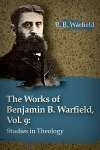
The Works of Benjamin B. Warfield, Vol. 9: Studies in Theology
- Author: Benjamin B. Warfield
- Publisher: Oxford University Press
- Publication Date: 1932
- Pages: 671
In Studies in Theology, Warfield weighs in on a broad range of theological, philosophical, and social topics. This volume contains more than twenty articles and essays on a number of theological topics, including the task and method of systematic theology, the relationship between apologetics and theology, and the relationship between mysticism and Christianity. Warfield also includes chapters on specific theological topics, such as predestination, baptism, the theology of Jonathan Edwards, and the theological significance of Luther’s ninety-five theses. He also addresses pressing theological and social controversies, such as the age of human beings in response to Charles Darwin’s Origin of the Species, and the history and future of rationalism.
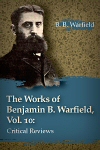
There may be no greater literary treat than to listen to one great scholar appraise and interact with the works of another. This volume contains nearly five hundred pages of Warfield’s most important reviews of the most prominent biblical scholars and theologians of his day. Critical Reviews invites us to participate in the controversies, deliberations, and interactions between great thinkers—all from Warfield’s perspective.

B. B. Warfield devoted much of his scholarly career to defending Reformed theology against modernism and emotional revivalism, and one of the central arenas in which he carried out this task was in the field of biblical criticism. An Introduction to the Textual Criticism of the New Testament serves as a primer to textual criticism for both his students and for interested laypersons.
Warfield aims to make as accessible as possible the principles of textual criticism. The complex task of criticism, he says, begins with the simple definition of a text as “the web of words itself.” In fact, wherever the written word exists, textual criticism is not only legitimate, but inevitable. In the case of the Bible, Christians must learn how to do it well. But what makes the text of the Bible different from other texts, such as great works of literature? And what is the role of the Holy Spirit? Warfield answers these questions with chapters on method, practice, and a history of criticism—all theologically informed and ecclesiastically faithful.
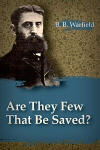
Are They Few that Be Saved?
- Author: Benjamin B. Warfield
- Publisher: Our Hope Publications
- Publication Date: 1918
- Pages: 16
Who can be saved? Who isn’t saved? For many, the answers to these questions constitute an insurmountable objection to the goodness of God. After all, how can a loving God condemn anyone? Wouldn’t God—in his omniscient and omnipotence—choose to save everyone?
Warfield’s concise monograph on the subject addresses the central issues relating to the doctrine of salvation. It includes a biblical account of election and reprobation, and comprehensively addresses what remains, for many, a nagging theological objection to Christianity.
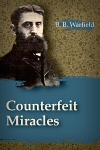
Counterfeit Miracles
- Author: Benjamin B. Warfield
- Publisher: Charles Scribner’s Sons
- Publication Date: 1918
- Pages: 327
What is the relationship between miracles and divine revelation? And how does God’s revelation through miracles differ from his revelation through spiritual gifts, or other means? In Counterfeit Miracles, Warfield weighs in on the role of miracles in Jesus’ ministry and the place of spiritual gifts in the church. In particular, he discusses speaking in tongues, prophecy, and healing, and outlines the relationship between the function and purpose of prayer in relation to the other gifts of the Spirit.
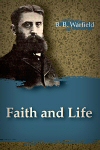
It became something of a tradition at Princeton Theological Seminary for prominent professors to addresses students in an informal setting on Sunday afternoons. Some of these professors included Archibald Alexander, Samuel Miller, and Charles Hodge. B. B. Warfield continued this tradition during his tenure as professor. Faith and Life includes forty-one addresses and sermons from those classes in accessible and easy-to-understand language. This volume brings one of America’s greatest theologians and one of Princeton’s most memorable professors within reach of non-technical readers.
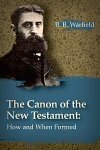
The Bible is comprised of a collection of books given by God to be the authoritative rule of faith and practice. But where did these books come from? And why does the church elevate the Bible above other books and above other forms of divine revelation? In The Canon of the New Testament: How and When Formed, B. B. Warfield outlines the long and winding process which produced the New Testament canon, including the paradoxical relationship between divine inspiration and human authorship, as well as the process by which the church recognized some books as authoritative and others not. Most importantly, Warfield explains why the New Testament contains the most theologically and historically reliable source of divine revelation.
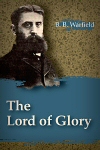
The Lord of Glory: A Study of the Designations of Our Lord in the New Testament with Especial Reference to His Deity
- Author: Benjamin B. Warfield
- Publisher: American Tract Society
- Publication Date: 1907
- Pages: 332
In The Lord of Glory, Warfield surveys the entire New Testament to learn how the writers of the New Testament thought of Jesus, especially with regard to his divinity. He also attends to the ways in which Jesus refers to himself, the names others used to address him, and what the disciples thought of him. Part exposition, part argument, The Lord of Glory shows that the New Testament presents a unified consensus about the divinity and Lordship of Christ.
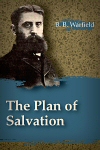
All Christians believe that the power to save belongs to God alone, but did God plan to save individuals before the creation of the world? If so, why didn’t God—in his foreknowledge—choose to save everyone? The doctrine of salvation is perhaps the simplest and most basic Christian doctrine, and the act of God’s saving power remains central to all of Christian thought and practice. If that’s the case, why is it so difficult for the church to articulate exactly what God’s redemptive work looks like?
The Plan of Salvation is comprised of five lectures delivered at Princeton Theological Seminary in June, 1914 on the various conceptions of the doctrine of salvation. These lectures summarize the divergent views about salvation held by various groups of Christians throughout history. Although Warfield does not endorse all of them, he masterfully explains the significant components of each and how each doctrine of salvation relates to the other central doctrines of Christianity.
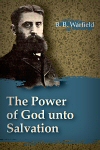
The Power of God unto Salvation
- Author: Benjamin B. Warfield
- Publisher: Presbyterian Board of Publication
- Publication Date: 1903
- Pages: 254
The Power of God unto Salvation contains a collection of sermons preached by Warfield in the chapel of Princeton Theological Seminary, which address both the pastoral and theological concerns of his students. These sermons cover a broad range of topics, including divine revelation, salvation, God’s omnipotence, and the person of the Holy Spirit, and reveal Warfield’s theological commentary on key texts.
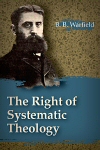
Systematic theology has fallen on hard times—even its right to exist has been called into question since the late nineteenth century. What’s the cause? The skepticism about the human capacity for knowledge, the reduction of religion to sentiment and emotion, the erosion of divine revelation by modernist critics—and much more. In the face of these obstacles, Warfield argues that theology is not only possible, but is now more necessary than ever. The task of theology remains urgent because only theology can address the most basic questions of our existence: Does God exist? How is God known? Are our faculties for understanding God—his nature, his works, his purposes—reliable and trustworthy? The Right of Systematic Theology addresses these questions in the face of widespread denial and doubt.
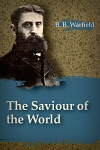
The Saviour of the World
- Author: Benjamin B. Warfield
- Publisher: Hodder and Stoughton
- Publication Date: 1916
- Pages: 270
The Saviour of the World contains nine of Warfield’s sermons preached in the chapel of Princeton Theological Seminary. Each sermon is based on a significant text of the New Testament, including the Parable of the Prodigal Son, the metaphor of Jesus as the Lamb of God, God’s love, God’s glory, the resurrection, and the incarnation. Conversational in tone and firmly rooted in the Bible, his sermons in The Saviour of the World reveal the clear connection between his theology and his understanding of the Bible.
Archibald Alexander (1772–1851) was born in Rockbridge County, Virginia. He was educated at nearby Liberty Hall, and studied for two years under William Graham. At age 25, he was elected President of Hampden Sydney College in Virginia. Shortly thereafter, he moved to Philadelphia to become Pastor of the Third Presbyterian Church. When Princeton Theological Seminary opened in 1812, Archibald Alexander became First Professor of Theology, where he served until 1840. Among his students was Charles Hodge, who named his son, A. A. Hodge, after his mentor.
Charles Hodge (1797–1878) counts as one of the most influential theologians of the nineteenth century and one of Calvinism’s most ardent defenders in America. He was born in Philadelphia to Hugh and Mary Hodge. He graduated from the College of New Jersey (Princeton University) in 1815, and was ordained in the Presbyterian Church in 1821. In 1822, at the request of Archibald Alexander, he became a professor at Princeton, and taught Biblical Literature and Systematic Theology until 1878. From 1826 to 1828, Hodge also studied in Europe, and became acquainted with Friedrich Augustus Tholuck, Wilhelm Gesenius, Augustus Neander, and Friedrich Schleiermacher.
During his tenure at Princeton, Hodge instructed more than three thousand ministers, served as moderator of the Presbyterian General Assembly in 1846, helped revise the Presbyterian Church’s Book of Discipline, and served on the Board of Foreign Missions. He also founded the Biblical Repertory and Princeton Review and served as its editor for forty-three years. In addition to his systematic theology and four Bible commentaries, Hodge also wrote books on the Presbyterian Church and published numerous articles.
Among his last words: “To be absent from the body is to be with the Lord, to be with the Lord is to see the Lord, to see the Lord is to be like him.”
Archibald Alexander Hodge (1823–1886) was born in Princeton, the son of Charles Hodge. He was named after Archibald Alexander, the principal of Princeton Theological Seminary from 1812 to 1840. A. A. Hodge attended Princeton College and Princeton Theological Seminary, graduating in 1847. He spent three years in India as a missionary, before returning to America to become Professor of Systematic Theology at Western Theological Seminary in Pittsburg, Pennsylvania in 1864. In 1877, A. A. Hodge left Western Theological Seminary to return to Princeton Theological Seminary to succeed his father as Chair of Systematic Theology.
Benjamin Breckinridge Warfield (1851–1921) was born in Lexington, Kentucky. He studied mathematics and science at Princeton University and graduated in 1871. In 1873, he decided to enroll at Princeton Theological Seminary, where he was taught by Charles Hodge. He graduated from seminary in 1876, and was married shortly thereafter. He traveled to Germany later that year to study under Franz Delitzsch.
After returning to America, Warfield taught at Western Theological Seminary (now Pittsburgh Theological Seminary). In 1881, Warfield co-wrote an article with A. A. Hodge on the inspiration of Scripture—a subject which dominated his scholarly pursuits throughout the remainder of his lifetime. When A. A. Hodge died in 1887, Warfield became Professor of Theology at Princeton, where he taught from 1887–1921. History remembers Warfield as one of the last great Princeton Theologians prior to the seminary’s re-organization and the split in the Presbyterian Church.
Reviews
5 ratings

Kevin Bratcher
6/12/2018

Debra W Bouey
11/11/2017

Daniel Caballero
1/22/2016

Schamma
10/30/2014

Mr. Youngblood
1/31/2014